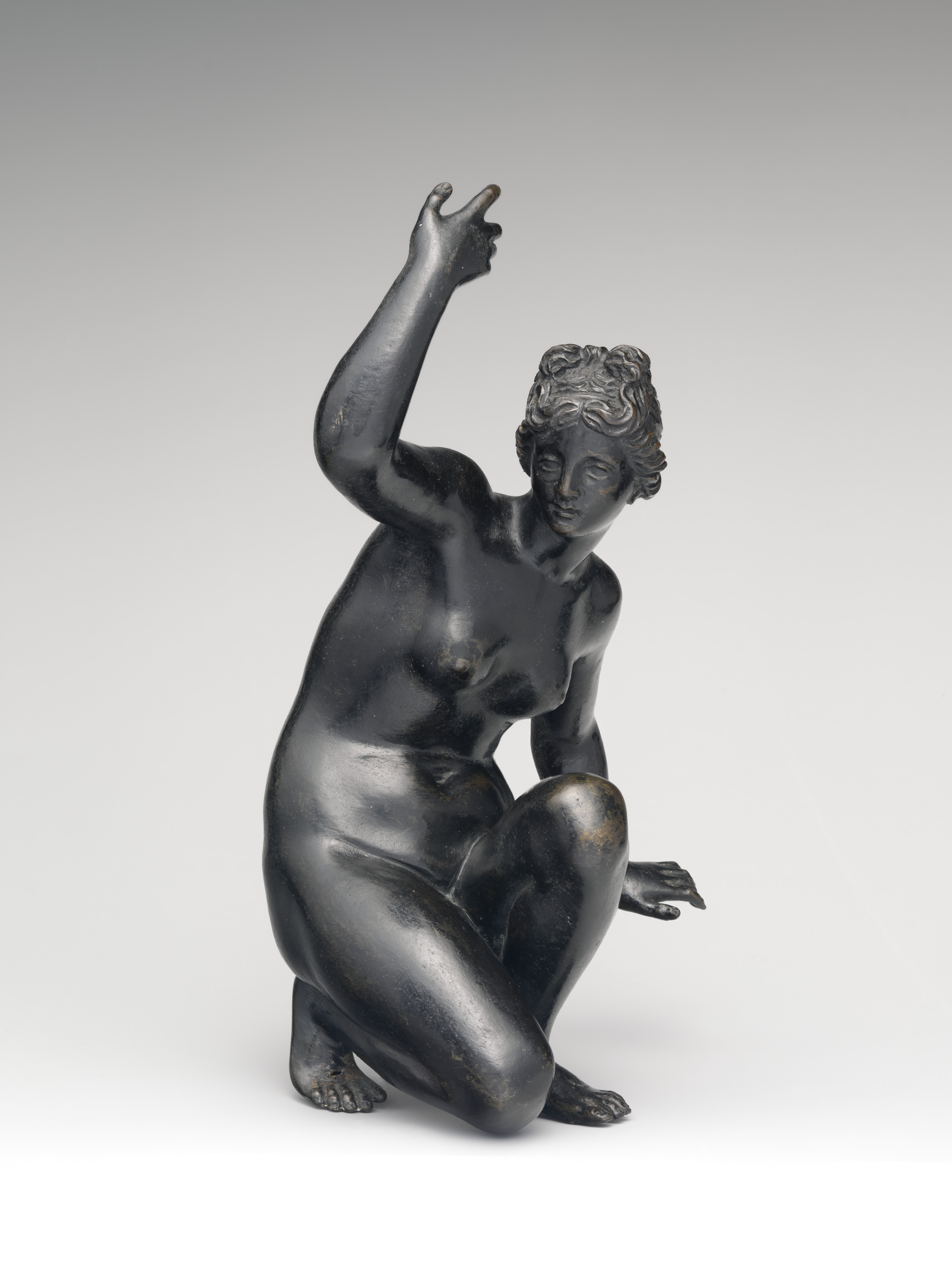Crouching Venus
Not on view
This bronze is an adaptation of the famous Hellenistic model known as the Crouching Venus. The goddess balances on her feet, right knee hovering just above the ground. Though her hairstyle mirrors that of the ancient prototype, the positioning of the arms—right extended upward, left stretched out and down—diverges from the model. The small statuette entered The Met in 1979 as part of the bequest of Mary Cushing Fosburgh, along with three other Italian bronzes (see cats. 142, A<1979.135.18>, A<1979.135.20>). The acquisition papers include an attribution to “Sussini,” presumably linking the bronze to the celebrated model by Susini’s master Giambologna (see cat. 120). Olga Raggio considered it French in origin, but by 1995 James David Draper had placed it in Italy, second half of the eighteenth century.[1] Richard Stone notes signs of typical of Italian Renaissance facture, such as wax-to-wax joins at the arms and carefully fitted screw plugs.[2] He also points out that the statuette’s current black patination cannot be original, and that it was painted over a chemically induced green patina of a type commonly applied to bronzes to “archaeologize” them. These observations are consistent with a bronze made as an ersatz antiquity for Grand Tour visitors to Italy in the eighteenth century. The change in the positioning of Venus’s arms suggests the piece might have served as a candleholder, for instance, or as part of a larger decorative ensemble.
-JF
Footnotes
(For key to shortened references see bibliography in Allen, Italian Renaissance and Baroque Bronzes in The Metropolitan Museum of Art. NY: The Metropolitan Museum of Art, 2022.)
1. ESDA/OF.
2. R. Stone/TR, November 5, 2010. The figure is thinly and evenly cast in brass containing very little tin or lead, a trace of nickel, and minute traces of other impurities, indicating that the copper was fire-refined.
Due to rights restrictions, this image cannot be enlarged, viewed at full screen, or downloaded.
This artwork is meant to be viewed from right to left. Scroll left to view more.




